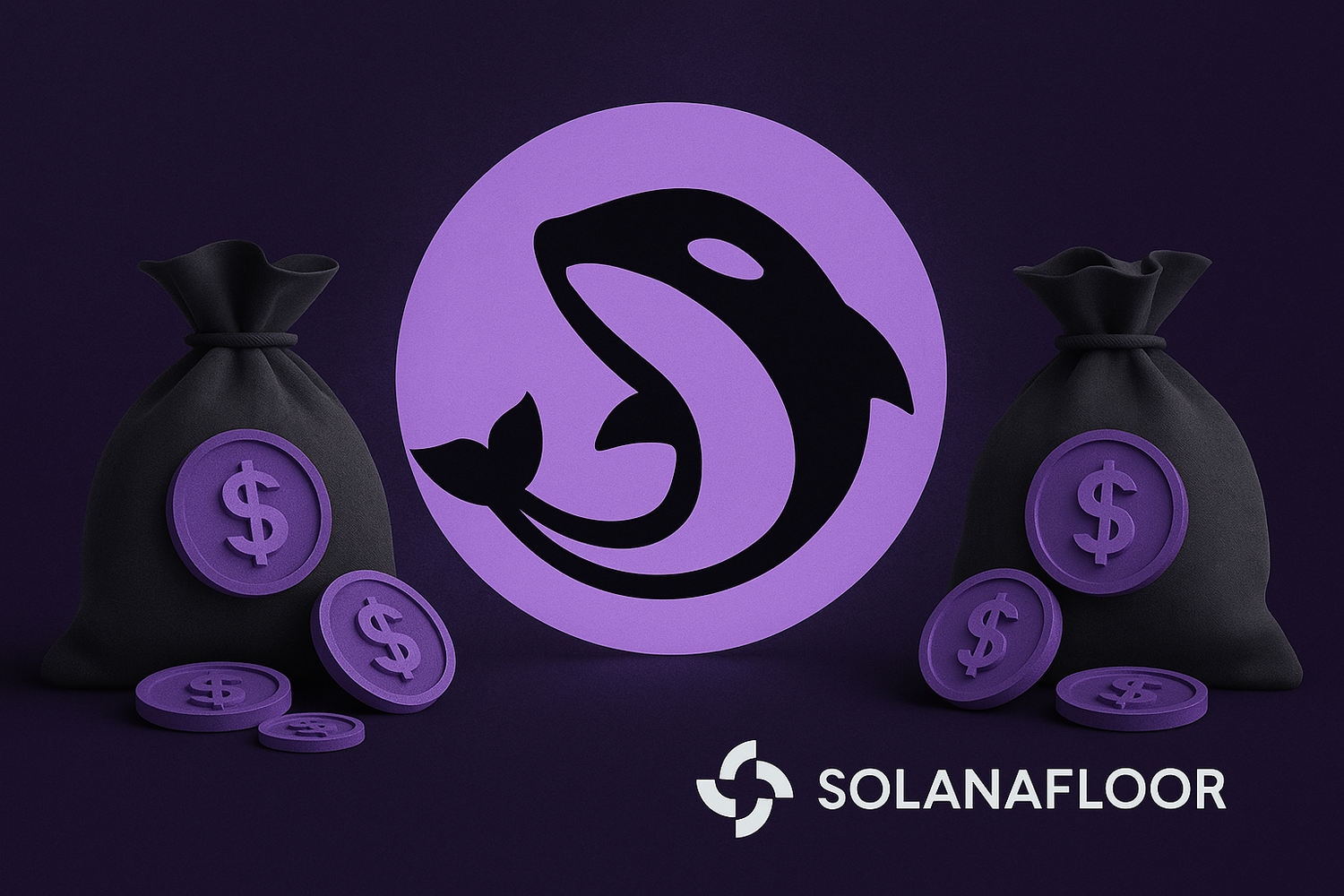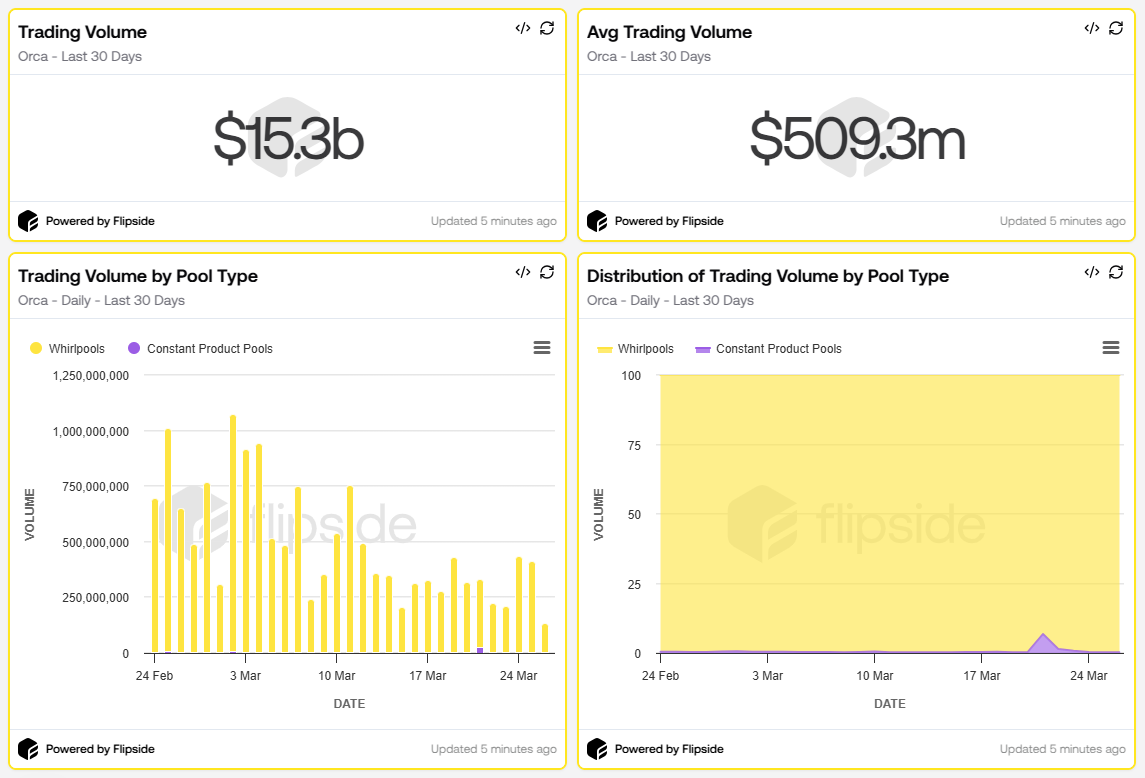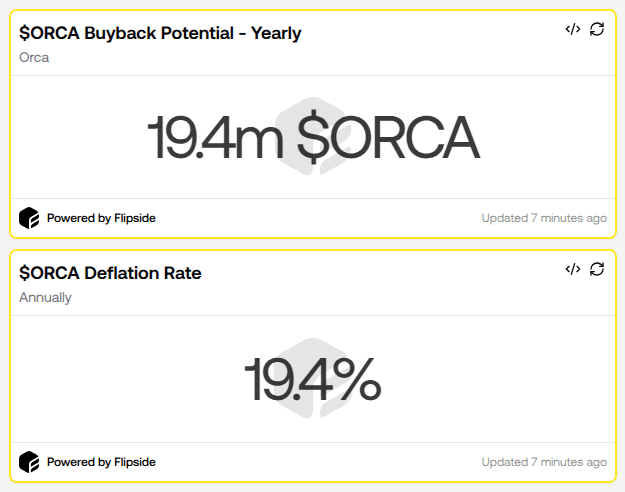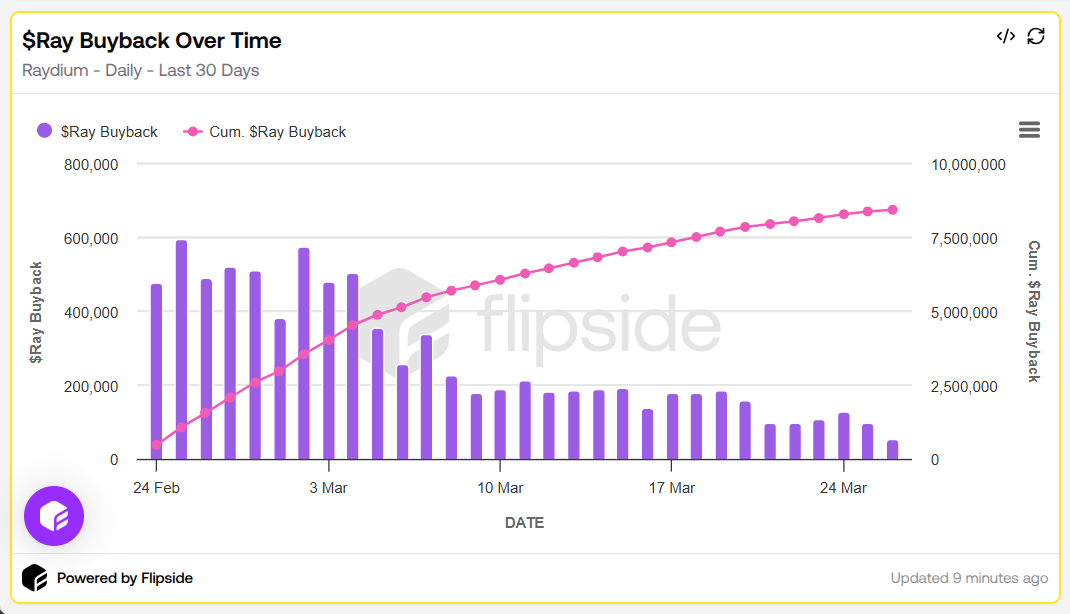
Exploring Orca’s Revenue Share Model: Can It Boost $ORCA's Value?
Scenario Analysis: Allocating the Entire 50% Treasury Share to $ORCA Buybacks
- Published:
- Edited:
Orca is among the earliest decentralized exchanges (DEXs) operating within the Solana ecosystem, having been active for over four years. Recently, it introduced the "Orca Token Revenue Share Model," a proposal that may notably affect ORCA's tokenomics.
Orca’s Revenue Model Explained
At its core, Orca generates revenue from trading fees across its liquidity pools. These pools come in two primary types:
-
Constant Product Pools: These pools charge a 0.30% fee per trade, with 0.10% directed to the Orca Treasury.
-
Whirlpools: Introduced in 2022, these pools have variable fees (e.g., 0.25%), sending approximately 0.05% per trade to the Treasury.
Since the launch of Whirlpools, Constant Product Pools have significantly declined in trading volume, now accounting for less than 1% of total activity on Orca.
Diving into the Numbers

Over the past 30 days, based on Flipside data, Orca’s combined pools processed a substantial trading volume exceeding $15.3 billion, which includes direct trading on Orca and activity routed via aggregators like Jupiter. Daily volumes average around $509 million.

Considering Orca’s current fee structure, the Treasury receives approximately $128,000 daily, translating into monthly revenues of about $3.8 million and annual earnings near $46.7 million.
The Orca Token Revenue Share Model
The recent proposal outlines a unique staking incentive model designed to reward long-term token holders. Under this model, $ORCA holders can lock their tokens for periods of 6 months, 1 year, or 4 years, earning multipliers of 1x, 1.5x, and 4x, respectively. A minimum stake of 100 ORCA is required to participate.
The model distributes 50% of Treasury fee revenues into a dedicated revenue pool, shared quarterly among staked holders in stablecoins or $SOL. The remaining 50% funds future development, token buybacks, and broader ecosystem growth. Stake holders' earnings depend directly on their staked $ORCA amount and the alignment multiplier they qualify for.
Potential Impact on $ORCA’s Price
While it's too early to definitively conclude if Orca’s model outperforms those of competitors like Raydium, hypothetical scenarios offer compelling insights.

Assume Orca dedicates the entire 50% revenue share (about $46.7 million annually) exclusively to token buybacks. Given $ORCA's current market conditions—a circulating supply close to 100 million tokens—this strategy would enable the buyback of roughly 19.4 million $ORCA per year, resulting in an impressive annual deflation rate of around 19.4%.
Such aggressive deflation could significantly bolster $ORCA’s price, positioning it favorably against competitors.
A Comparative Glance: Orca vs. Raydium

To contextualize Orca’s potential, let's compare it to Raydium, another prominent DEX on Solana. Over the last 30 days, Raydium executed $RAY buybacks worth around $8.4 million, exceeding Orca’s $3.8 million revenue earmarked for similar purposes.
However, the total supply disparity is crucial. $RAY’s total supply is significantly higher—about 555 million tokens. Consequently, Raydium’s monthly token buybacks amount to approximately 4.07 million $RAY (around 48.9 million annually), equating to an annual deflation rate of just 8.8%—less than half of Orca's potential 19.4%.
Final Thoughts and Next Steps
Orca’s proposed model presents a strong value proposition to token holders by aligning incentives with long-term growth. It offers a unique opportunity not only for immediate rewards through staking but also for substantial token price appreciation through structured buybacks.
However, the actual impact hinges significantly on the community’s final decision regarding the allocation of funds between staking rewards and buybacks. If the majority leans towards extensive token buybacks, $ORCA holders could see significant deflation-driven price appreciation.
In summary, Orca’s Revenue Share Model, coupled with strategic execution, has the potential to redefine its market position within the Solana ecosystem, creating substantial benefits for long-term holders.
Read More on SolanaFloor
Polymarket Integrates Solana: Multi-Chain Win or Vampire Attack?



